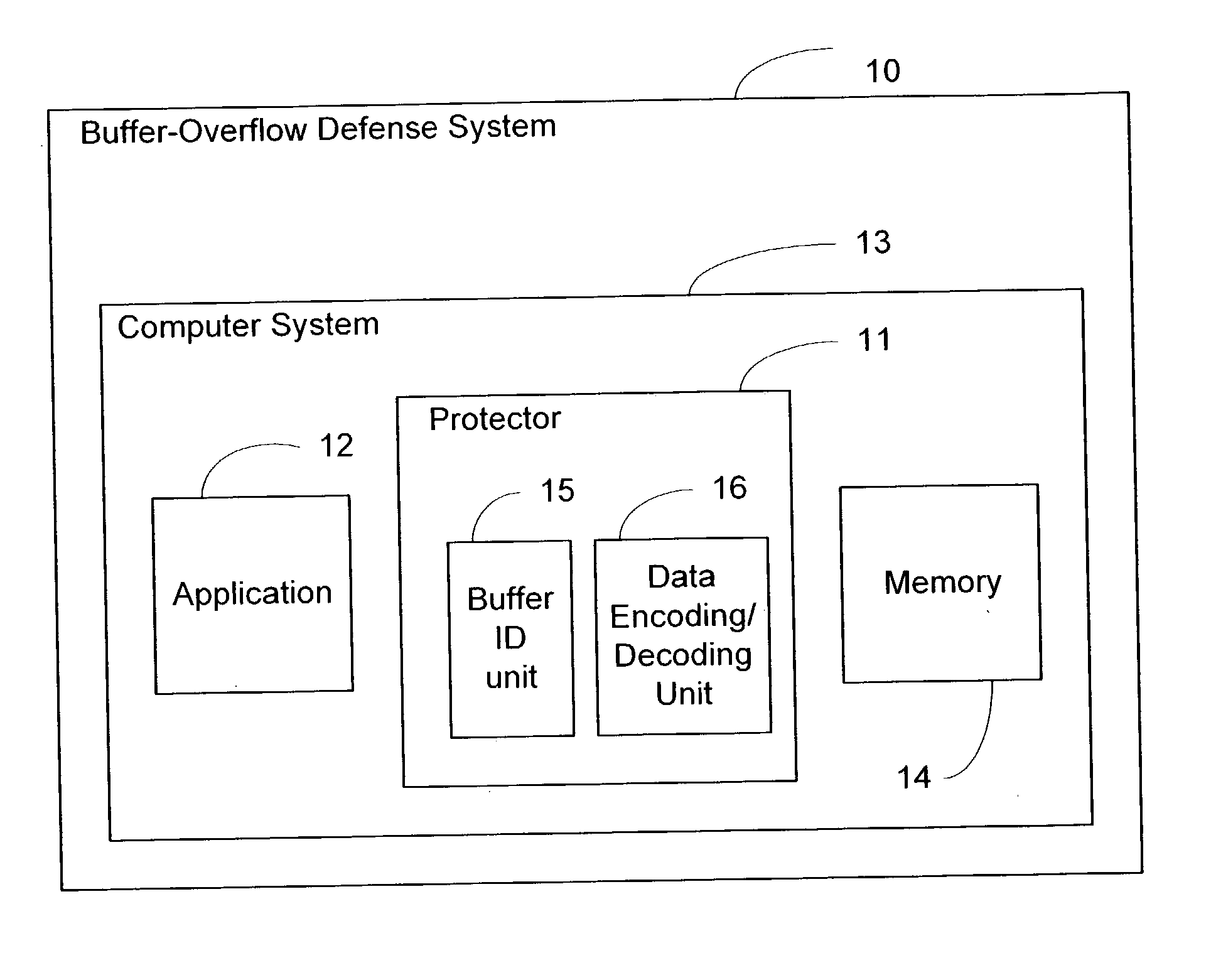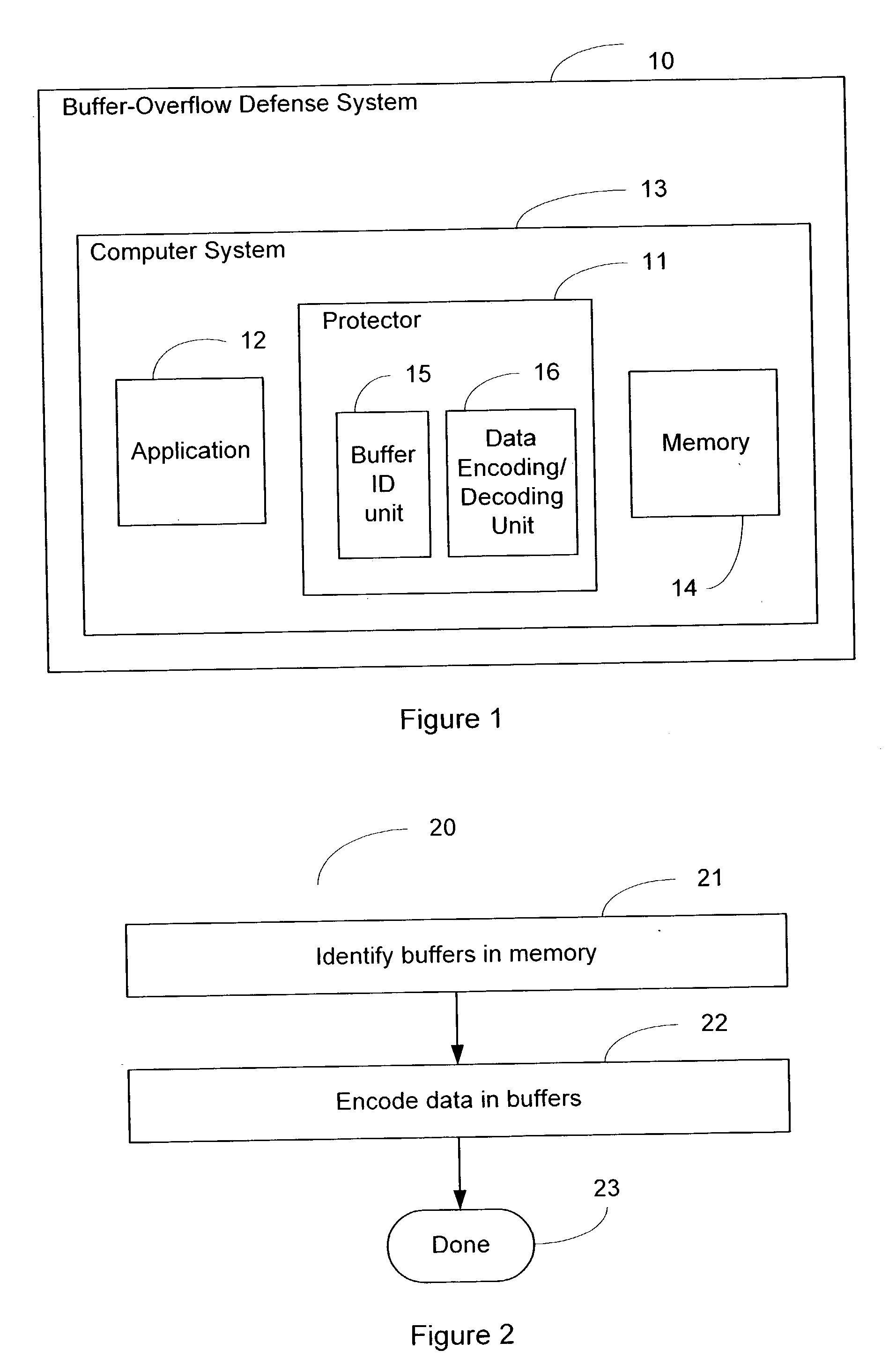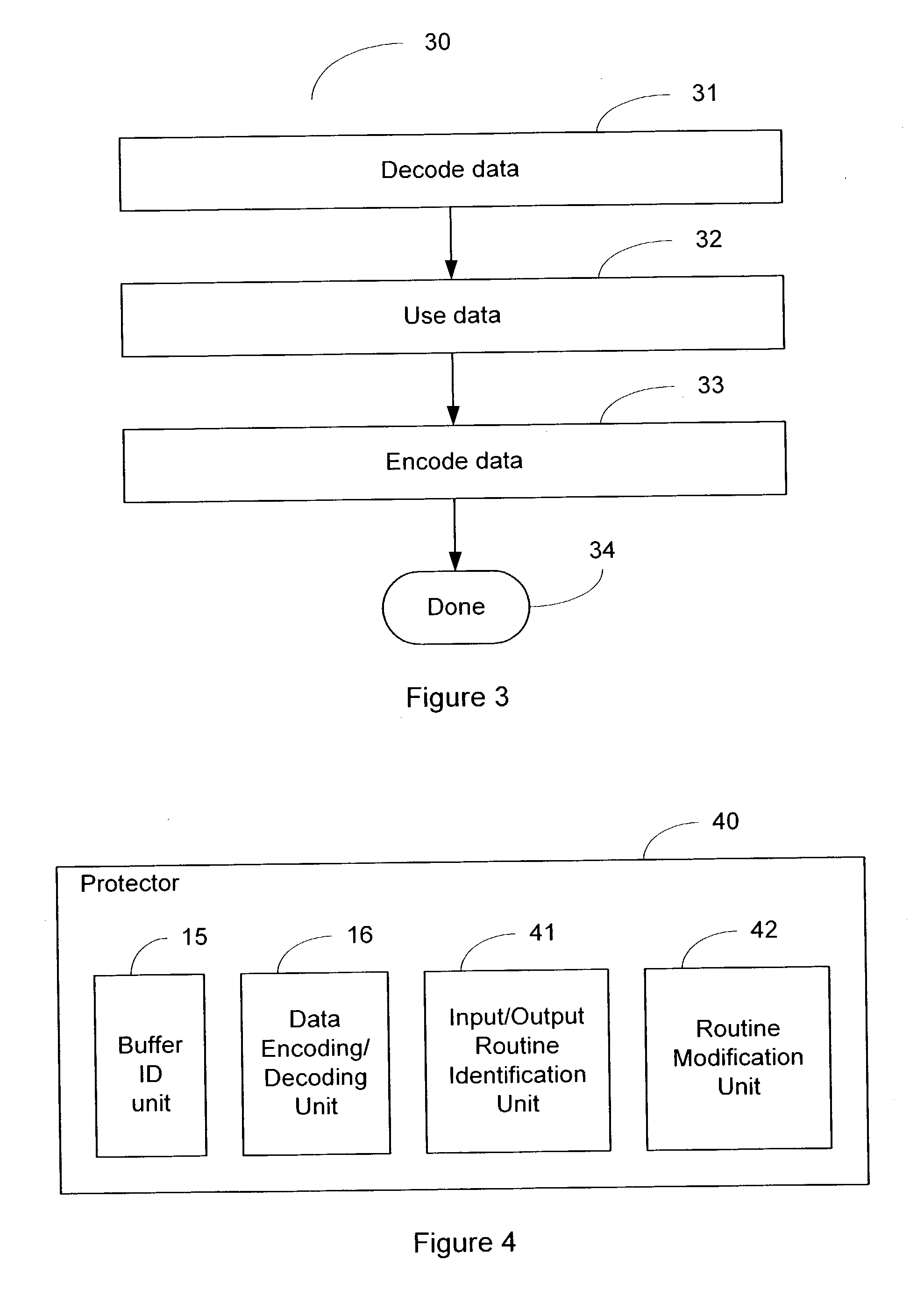System and method of foiling buffer-overflow and alien-code attacks
a buffer overflow and alien code technology, applied in the field of system and method of foiling buffer overflow and alien code attacks, can solve the problems of affecting the productivity of computer systems connected to the internet, affecting the security of alien code, etc., and achieves strong protection and shutting down buffer overflow attacks.
- Summary
- Abstract
- Description
- Claims
- Application Information
AI Technical Summary
Benefits of technology
Problems solved by technology
Method used
Image
Examples
Embodiment Construction
[0034] The concept of the invention is to disable fraud by means of communication diversity. An attempt to perpetrate a fraud generally depends on fraudulent communication. If, by diversifying data representations used in communication, we can render fraudulent communications effectively meaningless, we can prevent the effect which any such fraud was intended to achieve.
[0035] Software may be diversified using software obfuscation techniques, which inject some degree of randomness into implementations. However, obfuscation is aimed at confusing an onsite human attacker, rather than foiling a `canned` or otherwise remote attack: protecting a piece of software against a hostile environment is quite different from protecting an environment against hostile remote accesses or hostile pieces of software.
[0036] Tamper-resistant software (TRS) technology may be used to achieve diversity. Malware operates by tampering with the system; generally by fraudulent invocations or the presentation o...
PUM
 Login to View More
Login to View More Abstract
Description
Claims
Application Information
 Login to View More
Login to View More - R&D
- Intellectual Property
- Life Sciences
- Materials
- Tech Scout
- Unparalleled Data Quality
- Higher Quality Content
- 60% Fewer Hallucinations
Browse by: Latest US Patents, China's latest patents, Technical Efficacy Thesaurus, Application Domain, Technology Topic, Popular Technical Reports.
© 2025 PatSnap. All rights reserved.Legal|Privacy policy|Modern Slavery Act Transparency Statement|Sitemap|About US| Contact US: help@patsnap.com



